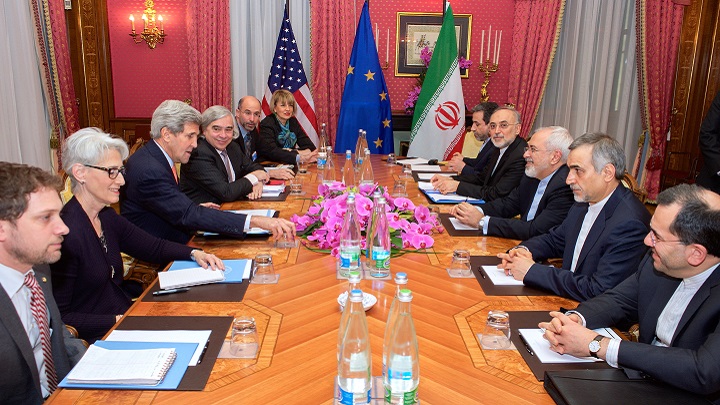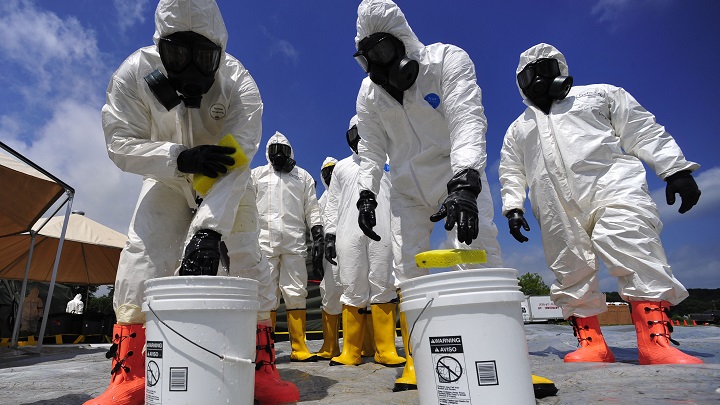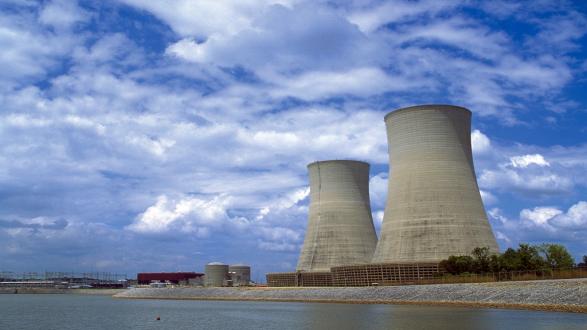The following article by Dr. George Perkovich is an advance reading for the sixth installment of the Edgerton Series on Iran and Turkey on June 22, After the Iran Accord: The Global Nuclear Future.
____________________
The U.S. debate over the Iran nuclear deal focused primarily on whether the agreement’s terms were sufficient to prevent Iran from acquiring nuclear weapons, whether Iran would cheat, and whether Iran would use gains from sanctions relief to fund aggression against its neighbors and Israel.
Practically no attention was paid in the media or in Congress to the possibility that the nuclear agreement, known as the Joint Comprehensive Plan of Action (JCPOA), could provide opportunities to strengthen the global nonproliferation regime. Of course, the potential to build on the agreement depends on its being successfully implemented; the deal’s collapse would create an international crisis that would subsume efforts to adopt its salutary provisions elsewhere.
Assuming implementation, the JCPOA contains a number of innovations that could in future years be applied in other countries to bolster confidence that their nuclear programs will be exclusively peaceful. Wider adoption of these measures could facilitate the cooperative spread of nuclear energy while reducing fear of proliferation. Moreover, these provisions exemplify steps countries would have to take in implementing nuclear disarmament someday.
It will take considerable time and patient give-and-take bargaining to persuade Russia and other influential players in nuclear diplomacy to build on the JCPOA, but there is no need to rush. Beyond the Republic of Korea, there are no other states on the near horizon that have the capability and intention to initiate a new fuel-cycle program.
How the JCPOA Strengthens the Nonproliferation Regime
The nuclear nonproliferation regime derives its legitimacy and basic principles from the Nuclear Non-Proliferation Treaty (NPT). But the authors of the treaty necessarily left some of its key terms vaguely defined, recognizing that technology and history would evolve in ways that could not be predicted in 1968 when the NPT was completed.
For example, when the treaty mentions the right to peaceful nuclear energy in Article IV, it does not enumerate specific technologies that states should be allowed (or not allowed) to acquire for this purpose. The NPT’s injunction against acquiring nuclear weapons does not define what constitutes a nuclear weapon or a nuclear-weapon program. Nor does the treaty specify what verifiable nuclear disarmament should entail—that is, what nuclear and related materiel, equipment, and activities a nuclear-disarmed state would not be allowed to retain, and under what forms of verification.
"The JCPOA ... defines conditions, as well as monitoring and verification mechanisms, that would significantly bolster international confidence that a state’s fuel-cycle activities are exclusively peaceful."
The JCPOA innovatively fills in each of these lacunae in the NPT. While it does not settle or fully address these complex issues, it offers potentially important building blocks for doing so.
For example, the JCPOA, in practice, establishes that the NPT does not a priori deny states the “right” to acquire and utilize capabilities to produce fissile materials for peaceful purposes. Critics have identified this as a major shortcoming. The agreement makes it easier for other states to insist that they, too, should be allowed to enrich uranium, which many observers fear could exacerbate proliferation risks. But the JCPOA also defines conditions, as well as monitoring and verification mechanisms, that would significantly bolster international confidence that a state’s fuel-cycle activities are exclusively peaceful.
Importantly, the agreement provides a model for making a state’s fuel-cycle activities commensurate with demonstrable civilian requirements. It limits the level of enrichment to 3.67 percent, which is the typical requirement for nuclear power reactors. (For nuclear weapons, uranium needs to be enriched to 90 percent.) Thus, while a state could in the future insist on enriching uranium, the international community could cite the JCPOA as a basis for requiring low limits on the level of enrichment. The agreement constrains the volume of enriched uranium that the state may accumulate before it demonstrably needs large quantities of nuclear-reactor fuel. In the case of Iran, this limit is 300 kilograms for a period of fifteen years, with an understanding that after that period Iran’s enrichment capability would expand according to a plan to be shared in advance with the International Atomic Energy Agency (IAEA). There is little reason why states wishing to begin peaceful enrichment programs in the future should not accept similar constraints.

The principle of keeping the production and accumulation of fissile material proportionate to manifest civilian requirements is also evident in how the JCPOA has addressed the issue of plutonium production and separation. Iran has no civilian need for plutonium. In accordance with Annex I of the JCPOA, Tehran has agreed to redesign the Arak heavy-water reactor “to minimize the production of plutonium and not to produce weapon-grade plutonium in normal operation.” Iran also has assented to the agreement’s condition that, for fifteen years, it not engage “in any spent fuel reprocessing or construction of a facility capable of spent fuel reprocessing,” and Tehran has added that it does not intend to reprocess thereafter.
"These unprecedented and unending prohibitions, now codified in a legally binding UN Security Council resolution, have several implications conducive to preventing weapons proliferation, defining nuclear disarmament, and facilitating peaceful nuclear cooperation."
Monitoring and verification procedures in the JCPOA build international confidence too. Iran’s uranium-mining activities will be monitored for twenty-five years. Annex I of the agreement stipulates that, for twenty years, “Iran will declare all locations and equipment... that are used for production of centrifuge rotor tubes or bellows, and will permit the IAEA to implement continuous monitoring…” For fifteen years, enrichment will be allowed only at one facility, Natanz, to which the IAEA will be given daily access.
These provisions, among others, significantly decrease the prospects that Iran could divert the outputs of declared facilities to produce nuclear weapons. More importantly, these measures, taken together, increase the probability that the IAEA and international intelligence services would detect clandestine nuclear activities in Iran. There is no legitimate functional reason why these forms of monitoring and verification could not or should not be applied in any other non-nuclear-weapon state that seeks to initiate uranium enrichment.
The acquisition of nuclear weapons is forbidden under Article II of the NPT, but the treaty does not specify what this means in practice. The JCPOA establishes that “Iran will not engage in activities, including at the R&D level, that could contribute to the development of a nuclear explosive device…” The text then specifies a number of such prohibited activities relating to computer modeling to simulate nuclear explosive devices, as well as the development and/or the use of multi-point explosive detonation systems, diagnostic systems, and explosively driven neutron sources.
These unprecedented and unending prohibitions, now codified in a legally binding UN Security Council resolution, have several implications conducive to preventing weapons proliferation, defining nuclear disarmament, and facilitating peaceful nuclear cooperation. They specify some, though not all, activities that are regarded as indicators of efforts to acquire nuclear explosive devices and therefore are unacceptable in non-nuclear-weapon states (unless the host country demonstrates plausible non-explosive purposes for these activities).
This specification—for the first time—clarifies activities other than those related to nuclear materials that should be considered inconsistent with purely peaceful programs. As a result, the barrier to proliferation has widened.

At the same time, details are provided for a future nuclear-disarmament regime. Activities deemed essential for developing nuclear explosives should not be conducted in states that purport to be nuclear-disarmed. Conversely, states that affirm their commitment not to conduct such activities, and that allow procedures to verify adherence to this pledge, could be more readily provided civilian nuclear cooperation.
Finally, the JCPOA contains an ingenious enforcement mechanism that could be employed in future cases of grave proliferation concern or, more speculatively, of violations of a disarmament agreement. In the case of an unresolved dispute over compliance with the JCPOA, any of its parties are allowed to call for a vote in the UN Security Council on whether sanctions on Iran remain lifted. If any one of the permanent members of the council votes against such a resolution, then the provisions of extant sanctions resolutions would be reimposed.
Essentially, the veto mechanism has been reengineered. Instead of allowing one permanent member of the Security Council to block imposition of sanctions, which has long undermined enforcement, now one member could reimpose sanctions in response to an unresolved dispute over compliance. As the JCPOA states, Iran has expressed that if sanctions are reintroduced in this manner, it “will treat that as grounds to cease performing its commitments under… [the] JCPOA in whole or in part.”
Nevertheless, in a future case in which the UN Security Council was to find a state to be noncompliant with its nonproliferation obligations and impose sanctions, this snap-back mechanism of the JCPOA could be adopted. The mere prospect of this can help deter future violations of nonproliferation rules.
The Future Application of JCPOA Provisions
Whether and how these innovative JCPOA provisions will be adapted and adopted more broadly will inevitably be the subject of intense debate among states. Russia and other countries initially have insisted that the agreement is not a precedent that should be applied widely. The interests behind these states’ reservations need to be explored, and may require bargaining over arms limits and other issues.
However, as the JCPOA is implemented over the next ten to fifteen years, it would be folly for the international community not to utilize its mutually beneficial provisions with states that newly seek to conduct fuel-cycle activities. (In states such as the United Arab Emirates that have committed to eschew such activities, these provisions would not be necessary.)
"Failure to apply the salutary lessons of the Iran experience and the provisions of the JCPOA would squander the prodigious international efforts and sacrifices that led to the peaceful resolution of this major nuclear crisis."
The United States and other countries could include such provisions in bilateral nuclear cooperation agreements. The Nuclear Suppliers Group—comprising 48 states—could require acceptance of relevant provisions as a guideline for trade with states that seek to acquire enrichment and/or plutonium-extraction capabilities. Future NPT review conferences could debate and recommend adoption of the prohibition on specified activities that could contribute to the development of a nuclear explosive device, as both a nonproliferation measure and a requisite of nuclear disarmament. The IAEA Board of Governors could update safeguards to include monitoring and verification procedures like those in the JCPOA in states with fuel-cycle programs.
Discussion and debate over these matters will take years to resolve. The key provisions of the JCPOA itself apply for ten to fifteen years and beyond. This allows plenty of time to employ its welcome features more broadly. Doing so would have the additional benefit of encouraging Iran to abide by the letter and spirit of the agreement indefinitely.
Indeed, failure to apply the salutary lessons of the Iran experience and the provisions of the JCPOA would squander the prodigious international efforts and sacrifices that led to the peaceful resolution of this major nuclear crisis.
____________________
Dr. George Perkovich is Vice President for Studies at the Carnegie Endowment for International Peace. He works primarily on nuclear strategy and nonproliferation issues, and on South Asian security. Follow him @PerkovichG.
The views and opinions expressed here are those of the author and do not necessarily reflect the official policy or position of the Pacific Council.




